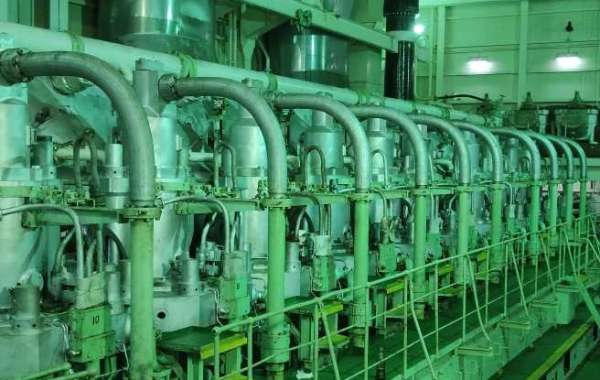Here are the detailed steps to follow when starting a ship’s engine:
1. Pre-Start Checks
Before starting the engine, conduct a thorough inspection of all key systems. This proactive step helps avoid operational issues during startup and ensures that the engine is ready to run efficiently. The pre-start checks include:
Fuel System Check:
- Fuel Supply: Ensure there's enough fuel and check for any leaks. Inspect fuel lines for blockages, and verify that the fuel pump is working correctly.
- Fuel Quality: Make sure the fuel is clean and free of contaminants, especially if the ship has been idle for a while. Avoid sediment or water from entering the engine.
Lubrication System Check:
- Oil Level: Verify that the engine oil level is adequate and the oil is clean. Dirty or low oil can impair engine lubrication and cause overheating or damage.
- Oil Pressure Check: Before starting, ensure the oil pressure is within the normal range.
Cooling System Check:
- Coolant Level: Check the coolant level to ensure the cooling system is ready to prevent engine overheating.
- Water Pump Check: Verify the water pump is functioning properly, and there are no blockages in the cooling circuit.
Electrical System Check:
- Battery Voltage: Check that the battery has sufficient voltage to power the electric starter.
- Cable Connections: Ensure that the battery cables and starter connections are secure to prevent any power interruptions.
Air System Check (if applicable):
- Air Pressure Check: For ships with an air starter system, ensure that the compressed air supply is adequate and stable.
2. Startup Procedure
Once the pre-start checks are complete, proceed with starting the engine by following these steps:
Set the Control System:
- Pre-Start Settings: Adjust the control panel based on the engine type and design. Most modern ships have digital control panels where you can press the start button to activate the electric starter.
- Control Panel Check: Confirm that all switches, buttons, and control levers are in the correct position. The start switch should be set to "Start," and the throttle and gear levers should be in neutral.
Start the Electric System:
- Press the start button or switch to activate the electric starter. The battery should power the starter motor, and the engine should begin smoothly.
- During startup, monitor the engine's indicators to ensure that voltage, current, pressure, and RPM are within the normal operating range. If abnormalities occur, stop the engine and investigate.
Switch to Backup Start System:
- In Case of Electric System Failure: If the electric starter fails (e.g., due to low battery or electrical issues), switch immediately to a backup starting system.
- Air Starter (if applicable): If your ship has an air starter system, ensure the air pressure is adequate, then activate the air starter.
- Spring Starter: If both electric and air systems fail, resort to the spring starter. Manually wind the spring to store mechanical energy, then release it to start the engine.
3. Post-Start Monitoring
After the engine starts, continuous monitoring is essential to ensure the engine operates smoothly without any problems.
- Engine Temperature: Immediately check the engine temperature to ensure it stays within the normal range. Overheating could indicate an issue with the cooling system.
- Engine Pressure: Check the engine oil pressure and coolant pressure. Low pressure in either system may indicate a malfunction that could damage the engine.
- Noise and Vibration: Listen for unusual noises or vibrations from the engine. Any abnormal sounds or vibrations should be investigated immediately, and the engine should be shut down if necessary.
- Emissions and Smoke: Inspect the exhaust system for any abnormal smoke or gas emissions. Unusual emissions could signal issues with the fuel, combustion, or exhaust systems.
4. Troubleshooting Startup Issues
If problems arise during the startup process, here are some common issues and solutions:
- Low Battery Power: If the battery is too weak to power the electric starter, use a spring starter or air starter as a backup.
- Fuel Supply Issues: If the fuel system is malfunctioning, inspect the fuel filters, pumps, and fuel lines for blockages or damage. Clean or replace components as necessary.
- Lubrication System Problems: If the oil pressure is too low, check the oil pump and oil lines for faults or blockages.
- Air System Failure (if applicable): If the air system cannot generate sufficient pressure, check the compressed air storage system and air lines for leaks or insufficient supply.
5. Concluding the Startup Process
Once the engine is running smoothly, ensure that all control systems remain in proper working order. Regularly monitor the engine’s performance throughout the voyage to maintain optimal operating conditions.
By following these steps, the ship's engine will start reliably, and the vessel will be ready for its journey.














